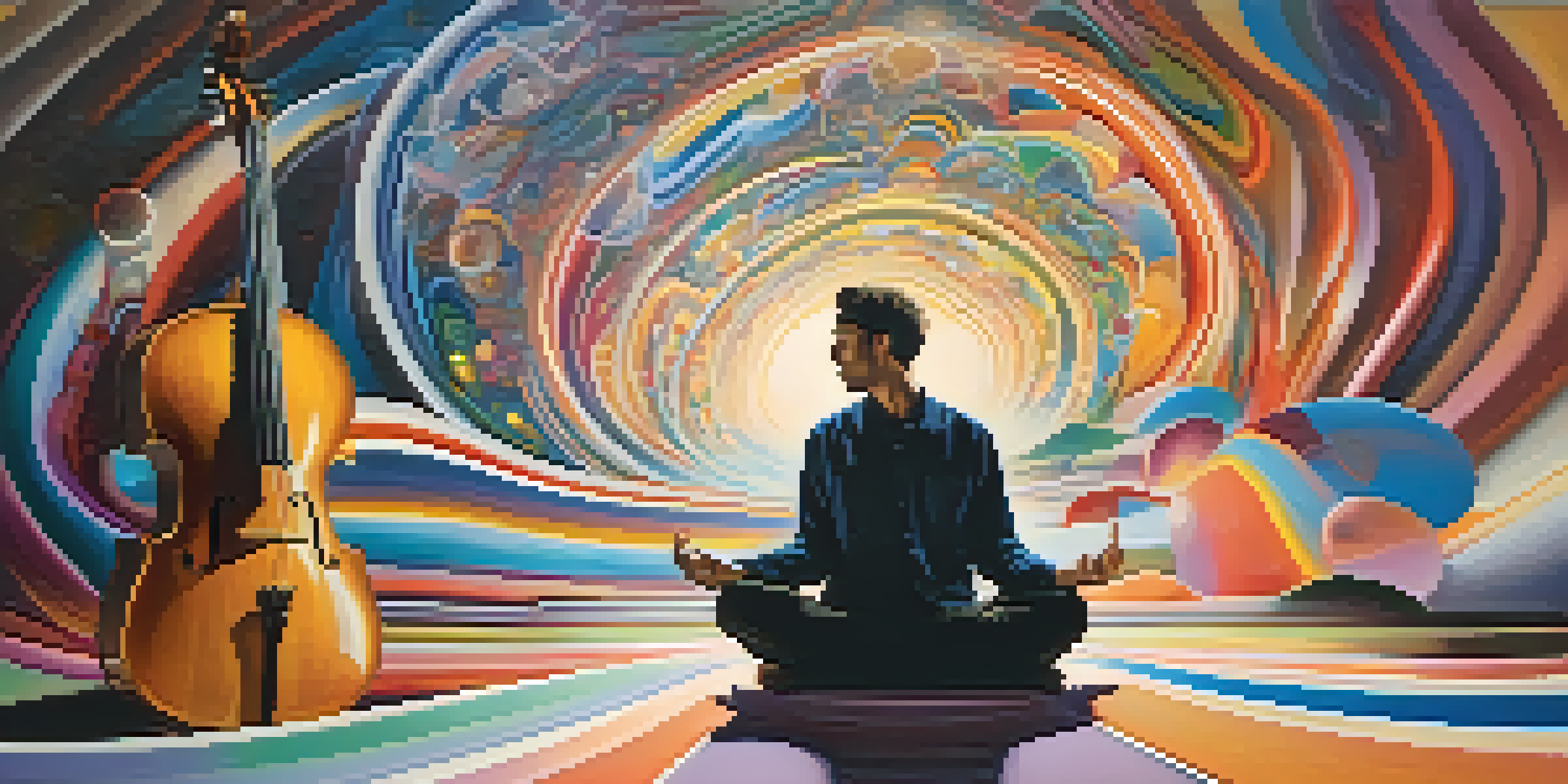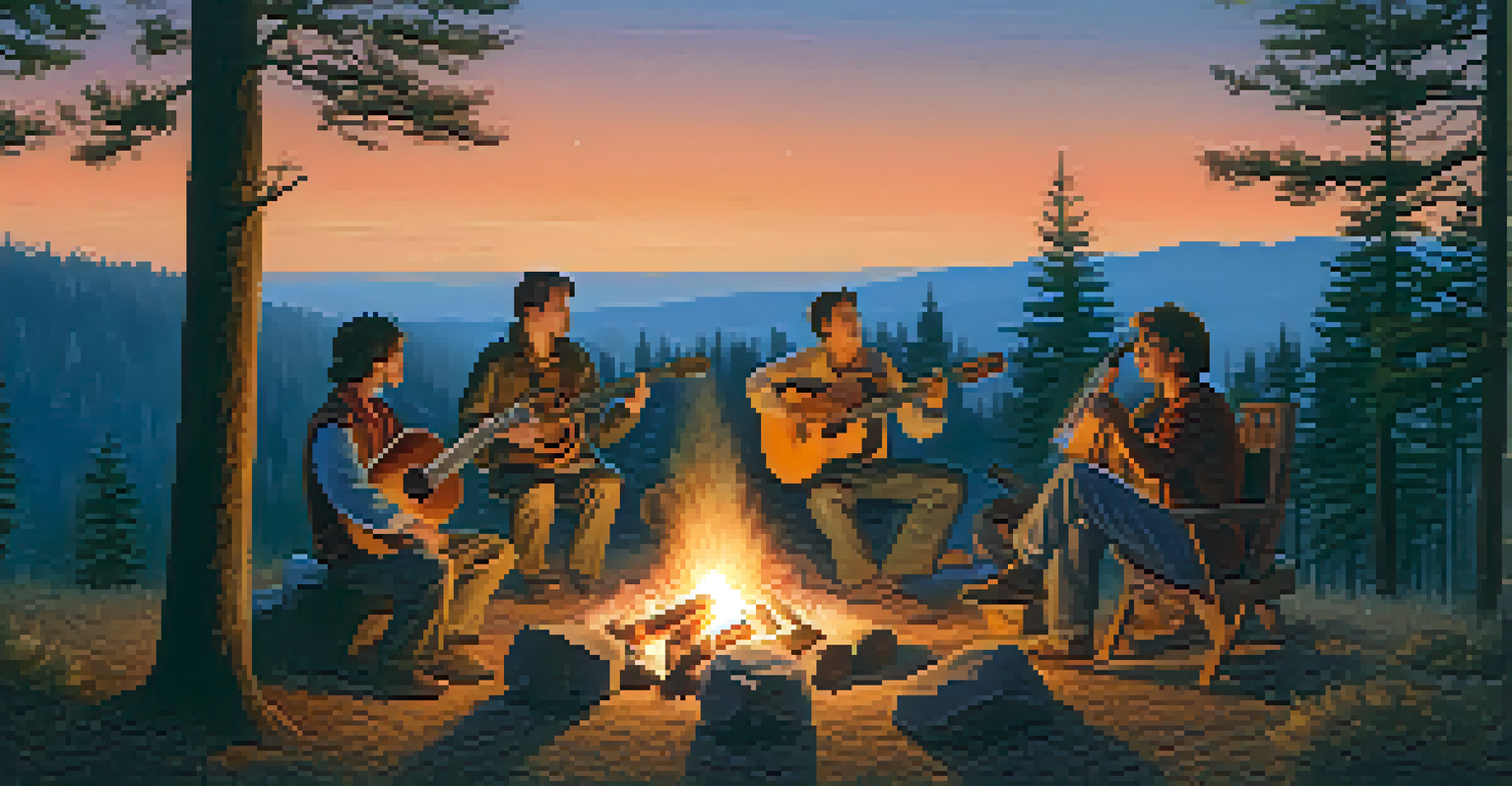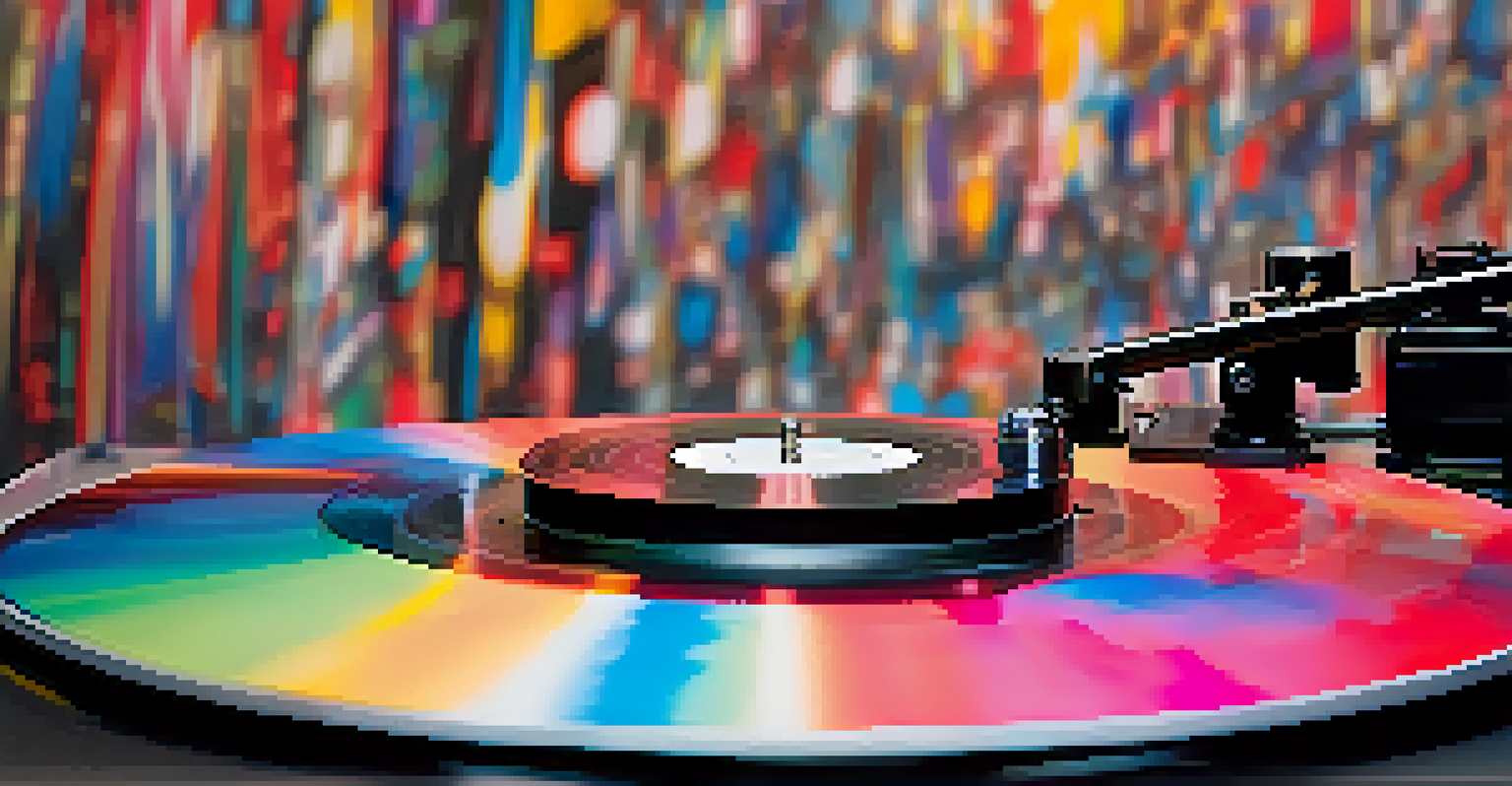Sonic Journeys: Entheogens as Catalysts for Musical Travel

Understanding Entheogens and Their Role in Music
Entheogens are substances that can induce altered states of consciousness, often used in spiritual or ceremonial contexts. These substances, like psilocybin mushrooms or ayahuasca, have been known to heighten sensory perception and emotional experience. Musicians and composers have long been fascinated by how these compounds can influence creativity and musical expression.
I found that the more I experimented with psychedelics, the more I was able to draw on personal experience and creativity to make my music.
By expanding the mind's boundaries, entheogens can inspire new sounds and compositions. Imagine a songwriter suddenly seeing colors or hearing melodies in a way they never have before. This shift in perception can lead to breakthroughs in creativity, resulting in music that resonates on deeper emotional levels.
Historical examples abound, such as the use of peyote by Native American cultures, which has influenced their music significantly. Similarly, the psychedelic rock movement of the 1960s showcased how artists like The Beatles and Pink Floyd used these substances to create innovative soundscapes that defined a generation.
The Connection Between Sound and Altered States
Sound and music have profound effects on our psyche, often leading us to altered states of consciousness. This connection can be particularly potent when combined with entheogens, which can enhance auditory experiences. For instance, the intricate layers of a symphony may feel more vivid and enveloping under the influence of these substances.

Many users report that music becomes a multi-sensory experience, where they can 'see' sounds or feel vibrations more intensely. This phenomenon can create a form of musical travel, where individuals find themselves journeying through different emotional landscapes. The experience often feels like a shared connection with the universe, transcending the mundane.
Entheogens Enhance Musical Creativity
Substances like psilocybin and ayahuasca can expand musicians' creative boundaries and inspire innovative compositions.
Furthermore, studies show that certain frequencies and rhythms can synchronize brainwaves, often leading to meditative or ecstatic states. When combined with entheogens, this can lead to profound spiritual experiences that can be both therapeutic and enlightening.
Musical Genres Influenced by Entheogenic Experiences
Several musical genres have roots in entheogenic experiences, particularly psychedelic rock, trance, and shamanic music. Psychedelic rock, for example, emerged in the 1960s as a direct response to the cultural embrace of entheogens. Bands like Jefferson Airplane and The Grateful Dead infused their music with elements meant to evoke the sensations and experiences brought on by these substances.
Music is a universal language, and it has the ability to transcend the physical realm, connecting us to deeper aspects of ourselves and the universe.
In trance music, repetitive beats and melodic structures create immersive soundscapes that can mirror the journey of an entheogenic experience. This genre often serves as a backdrop for those seeking to explore their consciousness, making it a staple in many psychedelic gatherings and festivals.
Shamanic music, too, plays a crucial role in traditional ceremonies involving entheogens. Drumming, chanting, and the use of natural instruments help facilitate a safe space for deep introspection and connection to the spiritual realm, showcasing how music and entheogens can work hand-in-hand to create transformative experiences.
The Therapeutic Potential of Music and Entheogens
Recent research suggests that combining music with entheogenic therapy can enhance psychological healing. This synergy can help individuals confront trauma and release pent-up emotions in a supportive environment. Music acts as a guiding force, helping patients navigate their journey through their subconscious.
For example, in psychedelic-assisted therapy sessions, carefully curated playlists are often used to evoke specific emotions or memories. This musical selection can facilitate deeper emotional processing, making it easier for individuals to confront challenges during their experience. Many participants report feeling more connected to their emotions, leading to breakthroughs in their healing journey.
Music Deepens Altered Experiences
The combination of sound and entheogens can create profound, multi-sensory experiences that facilitate emotional exploration.
The combination of music and entheogens is not just about exploration but also about healing. As we learn more about these methods, the potential for creating new therapeutic practices becomes increasingly promising, paving the way for innovative approaches to mental health care.
Creating a Soundtrack for Your Sonic Journey
Crafting the perfect soundtrack for a sonic journey can be an art in itself. Consider the type of experience you wish to have—whether it’s introspective, uplifting, or even cathartic. Selecting music that resonates with your emotional state can enhance the overall experience, allowing for deeper exploration.
A mix of ambient sounds, natural soundscapes, and melodic tracks can create an inviting atmosphere. Artists like Brian Eno or Tycho, known for their ethereal soundscapes, can help guide listeners on their journey, fostering a sense of tranquility and openness. Additionally, live music can add an organic element to the experience, creating a unique and immersive environment.
Don’t hesitate to experiment with different genres and artists, as personal preferences play a significant role in how music impacts your journey. Remember, the goal is to find a balance that feels right for you, enhancing the connection between sound, self, and the substances you may be exploring.
Personal Accounts: The Impact of Entheogens on Musicians
Many musicians have shared their personal accounts of how entheogens have influenced their creative process. For instance, iconic guitarist Jimi Hendrix often spoke about the role of psychedelics in shaping his music, claiming they opened his mind to new possibilities. His innovative guitar techniques and songwriting were undoubtedly inspired by these experiences.
Similarly, composer John Coltrane's exploration of spirituality and sound was deeply intertwined with his use of entheogens. His quest for understanding and transcendence led to groundbreaking works that challenged traditional jazz norms. Coltrane's music became a vehicle for expressing his spiritual journey, showcasing the profound connection between entheogens and creativity.
Therapeutic Use in Healing Journeys
Integrating music with entheogenic therapy can support psychological healing by helping individuals confront trauma in a nurturing environment.
These stories underscore the transformative power of entheogens in the music world, revealing how they can serve as catalysts for profound artistic expression. As musicians continue to explore these substances, we may witness the birth of new genres and styles that push the boundaries of creativity even further.
Navigating the Risks and Responsibilities of Use
While the exploration of entheogens can yield profound experiences, it's crucial to approach their use with caution and respect. Understanding the potential risks, including psychological challenges and legal implications, is an essential part of this journey. Knowledge and preparation can help ensure a safer and more enriching experience.
It's also important to consider the setting in which entheogens are consumed. A comfortable, safe, and supportive environment can significantly influence the experience. Many choose to engage in these journeys in the presence of a trusted guide or therapist to help navigate any emotional turbulence that may arise.

Ultimately, responsible use involves self-awareness, education, and respect for the substances and experiences involved. By prioritizing safety and awareness, individuals can fully embrace the potential of entheogens as catalysts for musical and personal exploration.